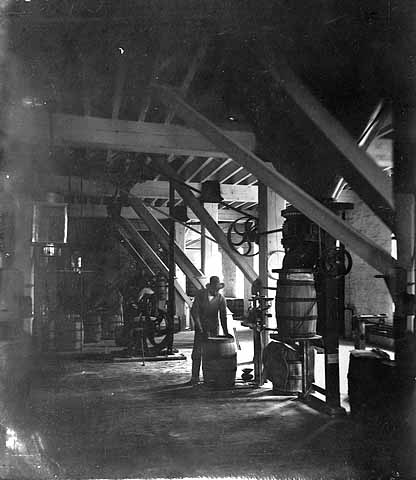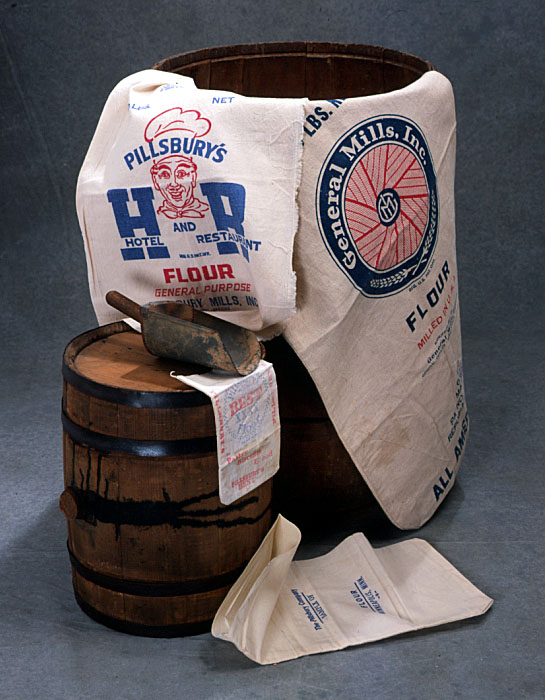Packing

Flour industry objects.
Minnesota Historical Society Museum Collections: Large barrel #1981.11.20; small barrel #8879.119; Pillsbury's H and H sack #1986.237.1; Best XXXX sack #446TI#1; plain white sack #1986.299.9; General Mills, Inc. sack #1994.71.133; Scoop #9619.5
"We have not yet followed the flour to the last process—that of packing into barrels. This is performed by a rising platform pushing the barrel up around a sheet-iron cylinder communicating with the flour-bins on an upper floor, and covering it as it is filled. In the mouth of the cylinder is a revolving wheel with blades which cut the flour out of the cylinder and pack it in the barrel. A scale contrivance stops the machine when the exact number of pounds have been packed. The barrel is then headed by hand - the only manual-labor process from first to last in the whole progress of the wheat-berry to the flour-barrel."
E. V. Smalley, "The Flour Mills of Minneapolis" in The Century; A Popular Quarterly (May, 1886).
Barrels vs. Sacks

Interior, Pillsbury-Washburn A Mill, Minneapolis, 1897.
Minnesota Historical Society Museum Collections: Large barrel #1981.11.20; small barrel #8879.119; Pillsbury's H and H sack #1986.237.1; Best XXXX sack #446TI#1; plain white sack #1986.299.9; General Mills, Inc. sack #1994.71.133; Scoop #9619.5
Until around 1900, flour was packed mostly into barrels (many of which were made in Minneapolis with lumber from the white pine forests). Cloth sacks and paper bags (also made in Minneapolis factories, mostly by women workers) had been introduced in the 1860s and gradually took over.
The change paralleled a shift in marketing. During the barrel age, families would buy from a grocer who would scoop flour into a sack. With sacks, the packaging and freight costs went down and consumers could buy smaller quantities packed in the factory. As an added bonus, a little creativity could turn the cotton sacks into clothing, dish towels, and other household items.
Loris Connolly, "Recycling Feed Sacks and Flour Bags: Thrifty Housewives or Marketing Success Story?" in Dress, vol. 19 (1992).
Martha Frey, "The Cooperage Trade in Minneapolis," in Hennepin History, vol. 55, no. 2 (Spring 1996).
John Storck and Walter Teague, Flour for Man's Bread (Minneapolis: U of M Press, 1952).

